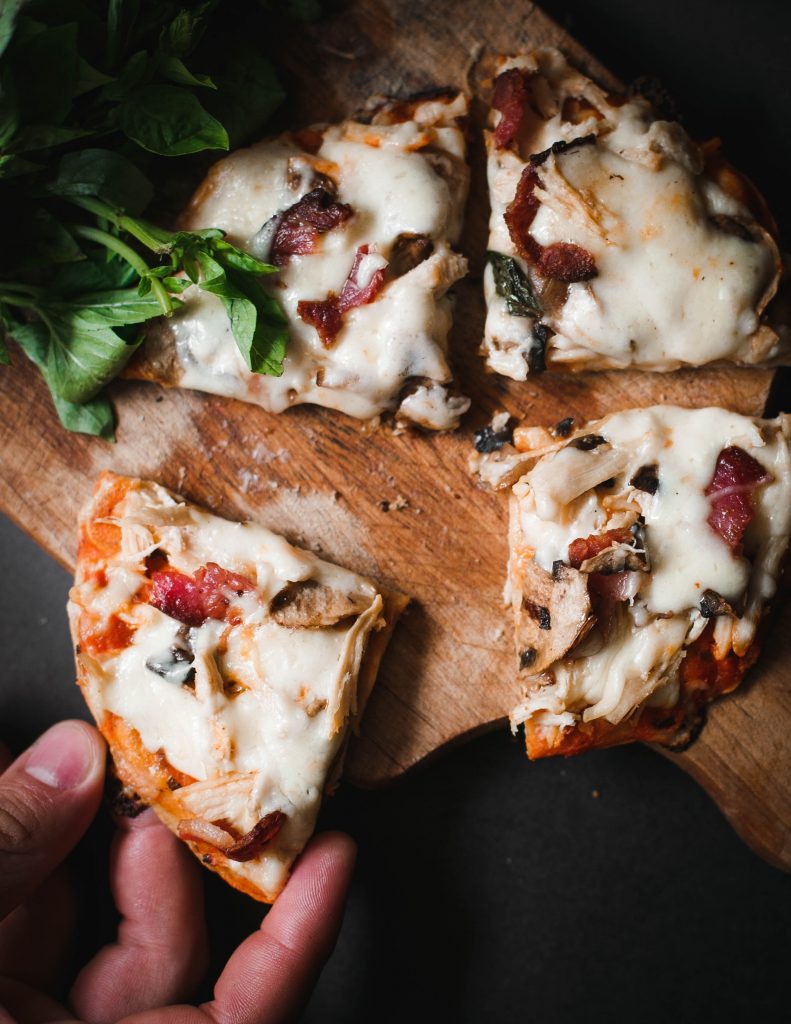Learning a bit more about bakers percentages and dough formulas is an important step in making better pizza more consistently. Hydration is one of these percentages and this affects the pizza dough the most.
This article has some information on how to formulate and read percentages. Also answering questions, What is the best hydration level? as well as a comparison of some popular recipes from online and in books. I have done hours of testing and created my best pizza dough recipe from all this research, you should give it a go too.

What Are Bakers Percentages?
Bakers percentages are a common way to define the proportions of ingredients in a recipe by defining percentages of ingredients compared to the total amount of flour. While typical recipes will specify the ingredients in volumes, the bakers percentages allow the reader to quickly compare recipes, and scale the recipe by multiplying the proportions.
Flour is always stated at 100% and then the other ingredients can be worked out as a percentage of that flour weight. For example, if you have 340g of flour, then you would need 221g/ml of water to have a 65% hydrated dough.
If you take your starting flour and divide by 100, you get 1% of the volume. You can then multiple this by the percentage you need, for example to find one percent you do 340 / 100 = 3.4. And so to find 65% we take our one percent and multiply it – 3.4 * 65 = 221.
Remember that 1g of water equals 1ml of water, so if you get 221g of water as your result then you can use 221ml of water.
The Main 4 Ingredients In Dough
Pizza dough needs flour, water, yeast and salt for its key ingredients. This means that the variation of any of them, particularly water, has a large impact. The addition of sugar and oil is optional.
Sugar is optional but many recipes will include it. It is beneficial for the home cooked pizza as the oven isn’t hot enough so it will help with browning the crust. It also adds a slight sweetness to the dough. It isn’t needed in a pizza oven because the high temperatures will be enough to brown the crust.
Oil is optional and added to dough, more traditionally a New York or home baked pizza. It will add some flavor, make the dough smoother, and also help with the browning.
Weigh Your Ingredients
When dealing with bakers percentages, it is important to use a scales to weigh your ingredients. Especially for the salt, yeast and sugar, which use such small quantities around 1%. Errors can easily happen if using teaspoon measurements.
For these measurements, you can pick up a cheap digital scales online. Be sure to get one which is accurate enough (to the 0.1g) like this one I like from Amazon. Most scales don’t go to such accuracy so keep an eye out when buying.
Use The Pizza Dough Calculator
You can work it out yourself, but there are a few online tools to help you calculate your dough quantities, giving you clear measurements for each ingredient.
I like the tool at PizzaCreator.net which you can use to help you work out the numbers. Just input how many pizzas you require. The advanced option allows you to control the percentages of water, salt, sugar and oil. I always put my hydration higher then their default 60%.
Pizza Dough Percentages Comparison
When I started out testing pizza dough, I wanted to see how different dough compared. Each different website or book will swear by different recipes and methods so its hard to know who to go by. It’s largely down to preference, so test a few ways out and see which one you like the best.
I’ve listed a few of my favorite resources for pizza dough. Tony Gemignani and Tom Lehmann are two of the most well known pizza experts. You should get a copy of The Pizza Bible by Tony (Amazon link), which has world champion-winning recipes for every pizza type from the USA and Italy.
How To Mix Ingredients
I follow the same steps for every dough, and this specific sequence produced perfect, consistent dough.
Hydrate the flour with the water for 30 minutes (autolyse stage, but can be skipped)
Hydrate the dried yeast in a splash of water then add and mix for a minute
Add the salt and sugar and mix for a minute
Add the oil and mix for a minute
Transfer the dough to the worktop and knead for 3-5 minutes
Rest for 1 hour at room temperature to start fermentation
Bulk ferment in the refrigerator for 24 hours for flavor
Remove 250g dough for one pizza and ball
Rest for 2 hours before stretching to return to room temperature
